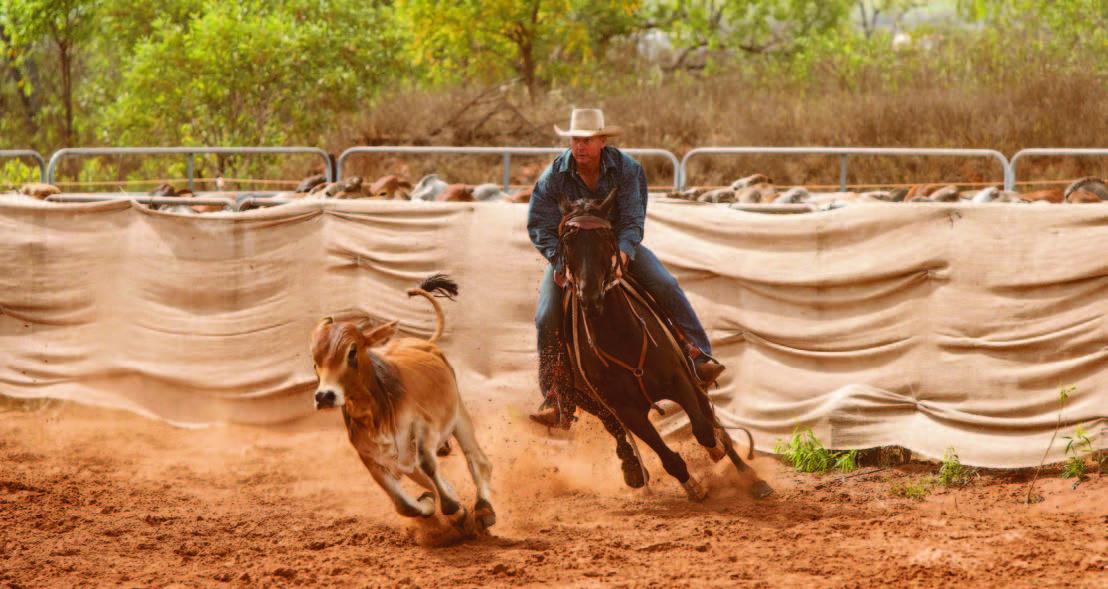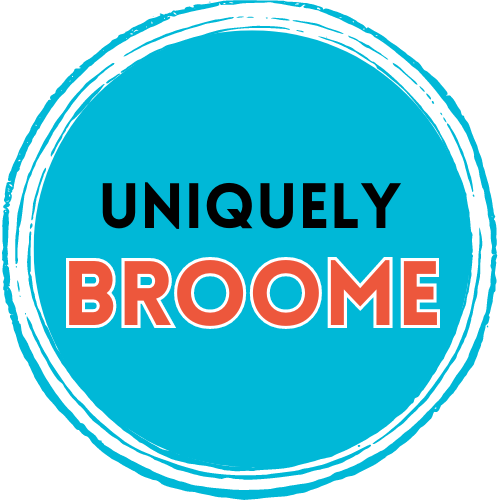
2022 - CAMPDRAFT - TRULY AUSTRALIAN
Campdrafting started by cutting fats or stragglers out in the paddock and taking them out of the mob to put in a different mob. That is where the sport started and there is a lot of skill and tradition. It is not ‘Americanafied’. It is truly an Australian tradition.
Andy’s story
I was born in a town called Walcha, 100kms east of Tamworth up in the Tablelands in NSW, and I grew up with horses and dogs. Dad always rode horses although he didn’t campdraft much, more polo cross. It was pretty hill country, so we always mustered with horses and used dogs.
When I left school, I wanted to be involved with the land and I went to an agricultural college in Longreach for a couple of years. After that, I worked in Western Queensland. I came to Camballin in WA for a season and then went down to Perth to break in horses for a year. When I returned home, I worked for Elders as a stock agent in cattle and sheep for 13 years. Later, I moved over to the northwest and I was involved with cattle in the Pilbara. Eventually, I moved to the Kimberley and worked for Argyle who owned Moola Bulla, Beefwood and Shamrock stations. That was a busy time. I was the pastoral manager for these stations and was on the road a lot.
Now I work for Roebuck Plains Station as the Trainee Manager, training men and women to become all-round station hands. We teach them the whys and hows. We want to skill them up, so they are an asset and are able to get a job on another station. In the past, they were just thrown in the camp, and it was a sink-or-swim attitude.
I started campdrafting when I was 12. I did it on-and-off over the years, depending on whether I had any horses or where I was working. When I worked for Elders, I did a bit of judging and still felt involved with the sport.
Campdrafting started by cutting fats or stragglers out in the paddock and taking them out of the mob to put in a different mob. That is where the sport started and there is a lot of skill and tradition. It is not ‘Americanafied’. It is truly an Australian tradition. I really love that it is purely Australian.
In the Kimberley, every rodeo has a campdraft. People from the stations are the main competitors and it is a very family-orientated sport. The whole family rides. Kids start around four or five years of age, and I have seen campdrafters in their eighties. There are kids’ event for juveniles and juniors where they have to round up a calf. The only difference is they do not have to cut it out from the mob. Then there is the 14–under-17 division which is normal competition. After that, there is an encouragement division which is for riders that have not won a draft. And then, it’s just to do with the rider’s age.
The horse is the hero in campdraft. You start off with a maiden horse that has not won a comp. Once the horse has won a maiden, it progresses into novice status. After a horse has won three novice events, it becomes an ‘open’ horse. It’s all about the horse. In competition, you have 40 seconds once you have ‘cut out’ your beast from the mob to move it around the poles and show the judge that you’re in control. The competition is more between yourself, the horse and the beast. You all have to be in sync otherwise it's not going to work. Competing against someone else, they may get a different beast. That makes a big difference so you cannot compare.
The campdraft community is friendly, even though we are competing. It is a small community, so you do know most of the people. The ringers come in from the stations with their favourite horse to give it a go, and you see them progress through the competition.
There is a huge amount of organisation — the cattle are the big thing. We have to muster the cattle, draft out the ones we want, and get them to the depot. The cattle are then trucked to the rodeo grounds. It’s a good week of work. All the cattle come from Roebuck Station so it’s a big effort for the station and a huge expense.
I ride my horses most weeks. As you are riding them for work, it’s good to gauge yourself against other people and, of course, there is the camaraderie of the sport. As long as my horses go well, I am happy — that is the main thing. I have had a few amazing horses. I broke in Old Bobby when I was 18 and he is still at Mum and Dad’s — getting old now.
All my horses are straight stock horses, pure heritage bred (meaning they have no quarter horse in them). Some people have quarter horses. It really is a personal thing. The main feature is that the horse wants to chase a beast so it has to be bred into them. It’s like the dogs, they have to want to chase a cow. You cannot train that into them. The Australian Stock Horse Society has been going for 50 years and the stock horse is a registered breed. It is a mixture of thoroughbred and other breeds.
In the early days, I did around 25 to 30 campdrafts a year. Now I do about five a year and I hope to be doing this for years to come. Maybe little Clancy, my son, will get into the sport.
NOTE Campdrafting originated in the late 1800s when stockmen transformed their hard work on the horse into a competition. Campdrafter, 85-year-old John Stanton, recalls the story of one of the first official campdrafting competitions.
‘One of the original competitions was when one station owner thought he had a better stockman than another, so they put some money up. The contest was to cut 20 head of cattle out of one yard and individually take them 300 or 400 yards to another yard. Who did it the quickest was the winner. And that's what I understand is one of the early competitions in campdrafting.’
